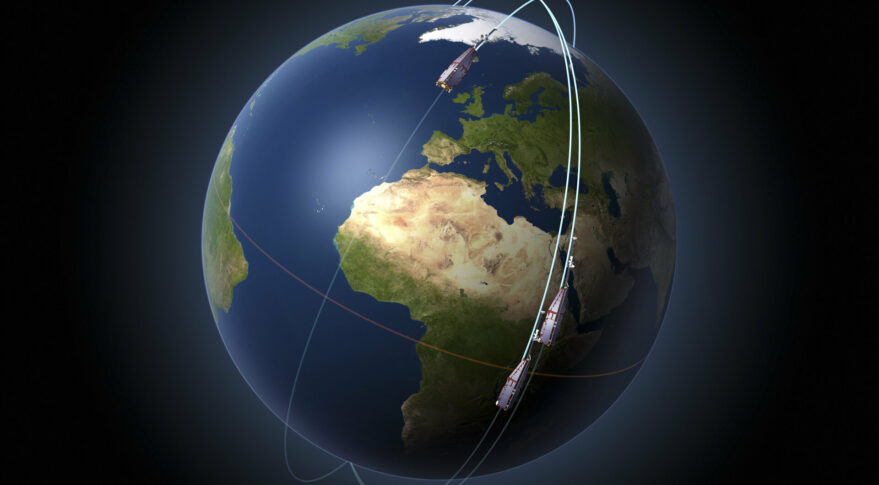
UK’s Open Cosmos gets ESA funding for space weather constellation (Image Credit: Space News)
TAMPA, Fla. — British small satellite startup Open Cosmos said May 27 it has secured European Space Agency funding to develop plans for a space weather monitoring constellation.
ESA awarded a 5.2 million euro ($5.6 million) contract to Open Cosmos, which is the technical lead for a European consortium comprising engineering, research and academic organizations for the proposed three-satellite NanoMagSat network.
The NanoMagSat concept aims to improve measurements of the magnetic field that protects Earth from incoming energetic charged particles, and of the ionospheric environment where space weather hazards threaten satellites and critical terrestrial infrastructure.
Florian Deconinck, vice president of institutional partnerships and future missions at Open Cosmos, said the consortium will use its funding to de-risk technologies on the ground over the next 18 months.
They will then propose a mission concept that could be developed for less than 30 million euros within three years.
Deconinck said NanoMagSat would have additional sensors and provide better spatial and temporal coverage than ESA’s Swarm satellites, which have been monitoring Earth’s magnetic field and ionosphere since 2013.
The roughly $300 million Swarm mission comprises three identical 468-kilogram satellites in near-polar orbit. The Swarm satellites were designed to operate for just four years.
Each NanoMagSat will weigh 24–30 kilograms, typical for a 16-unit cubesat.
Only one is set to be deployed to polar orbit, while the other two will be inclined at 60 degrees.
This would enable NanoMagSat “to recover phenomena with shorter timescales” than Swarm, Deconinck said, reducing four-month temporal revisits at latitudes between 60 degrees south and 60 degrees north to a little more than one month.
NanoMagSat will carry magnetic-field-detecting magnetometers and a mix of other instruments that include global navigation satellite system (GNSS) occultation sensors for measuring the ionosphere.
While the Swarm satellites do not have GNSS occultation sensors, they’re flying some sensors that will not be part of NanoMagSat, including an accelerometer for measuring non-gravitational accelerations caused by solar radiation and other factors.
NanoMagSat, in addition to monitoring conditions that influence space weather, will be able to support capabilities needed for accurate navigation, and provide information for geophysical surveying of minerals, Open Cosmos said.
NanoMagSat was picked in 2020 as a candidate for an ESA Scout mission, a new Earth observation program for proving how smallsats can add scientific value to data from existing spacecraft.
Scout missions have a 30-million-euro cost cap — including launch and in-orbit commissioning — and go from kick-off to launch in three years.
If Swarm is still operating when NanoMagSat launches, Deconinck said NanoMagSat’s polar-orbiting satellite “would be launched in an orbit optimized with the Swarm-B, benefitting from a better coverage than each constellation taken individually.” Swarm’s three identical satellites are named Alpha, Bravo, and Charlie (or Swarm A, B and C).
Open Cosmos is responsible for the satellite and mission concept.
The British startup is partnering with IPGP, a French governmental non-profit research and higher education establishment that is part of France’s Paris Cité University, which is the scientific lead for the mission.
Other consortium members include the University of Oslo in Norway, French technology research institute CEA-Leti, and Spanish engineering companies COMET-Ingenieria and Prosix Engineering.
CEA-Leti is overseeing the payload and developing its magnetometers, while the University of Oslo is providing Langmuir probes that determine the electron temperature, density and potential of a plasma.
Comet Ingenieria and Prosix Engineering are providing the deployable boom and hardware to hold its sensors. A supplier for NanoMagSat’s GNSS sensors has not yet been selected.








